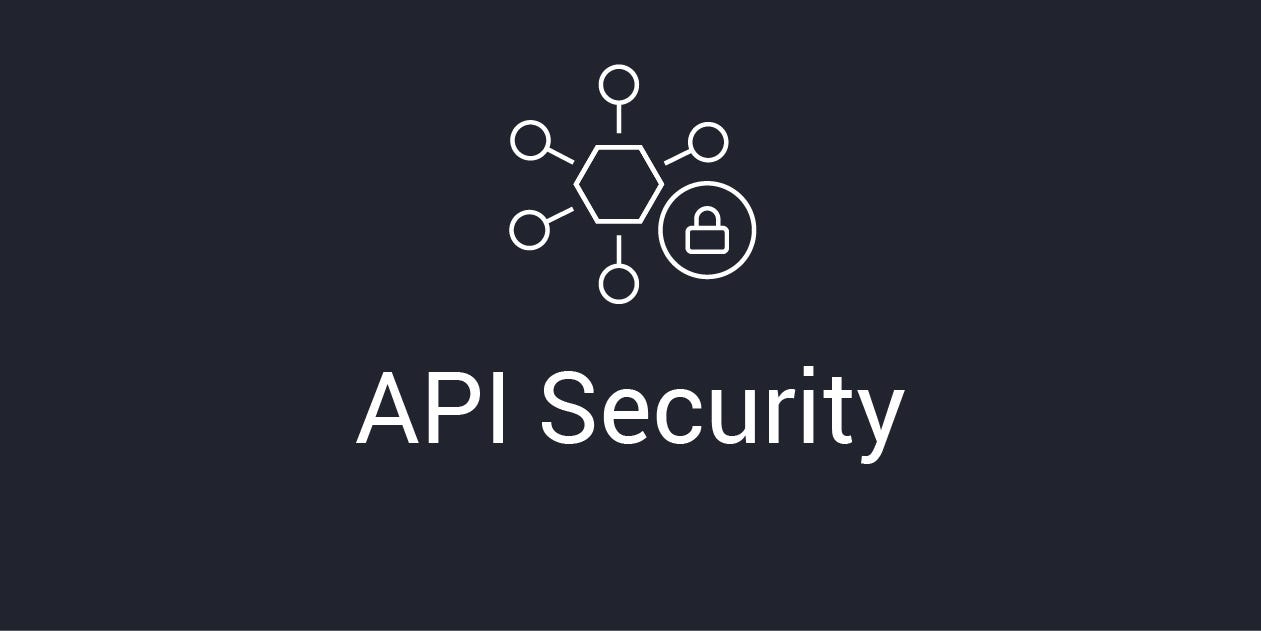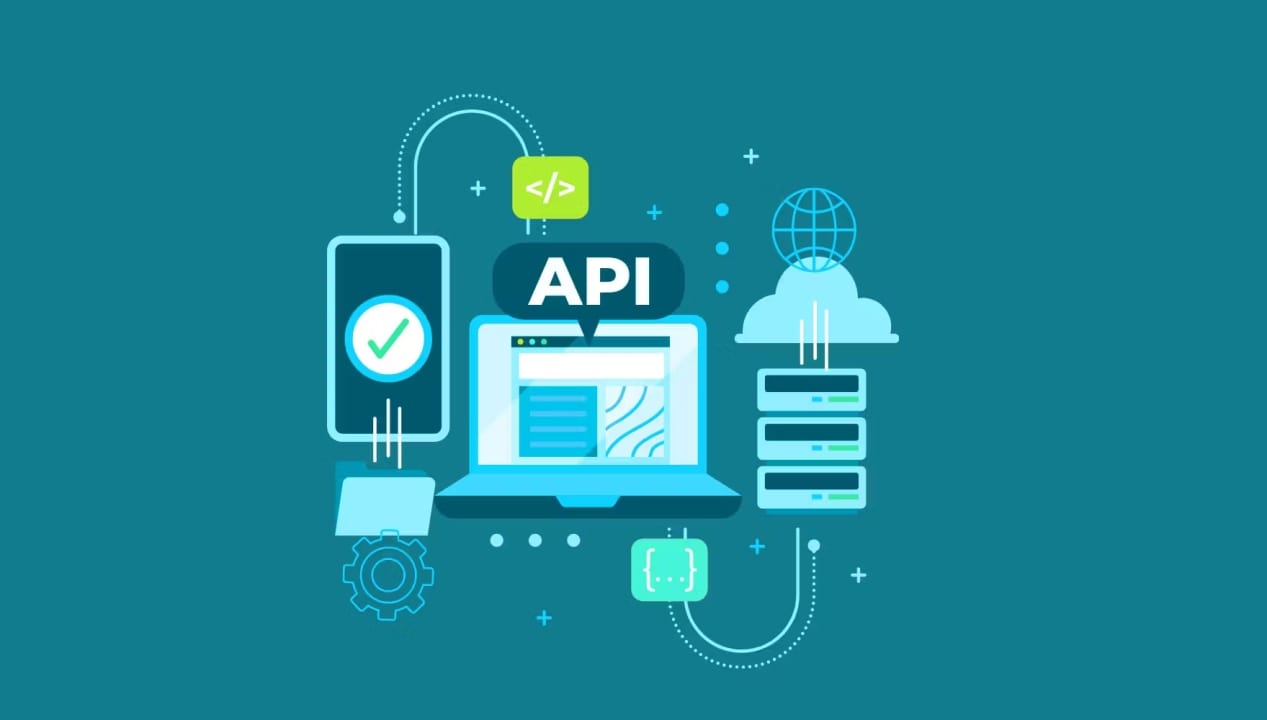REST API VAPT Services
What is REST API Security
In today’s interconnected digital ecosystem, REST APIs are crucial for enabling communication between web and mobile applications. This reliance makes them prime targets for cyberattacks. REST API Vulnerability Assessment and Penetration Testing (VAPT) services are essential in identifying and mitigating potential vulnerabilities to protect sensitive data and maintain secure operations.
REST API VAPT involves a two-pronged approach: vulnerability assessment and penetration testing. During the vulnerability assessment phase, security experts use automated tools and manual techniques to scan and analyze API endpoints. This phase is designed to detect common vulnerabilities such as broken authentication, insufficient access controls, and injection flaws, which can expose the API to threats.
Basic Need of REST API VAPT
Penetration testing, also known as ethical hacking, simulates real-world attacks on the API to evaluate its security defenses. Skilled testers exploit identified vulnerabilities to understand how an attacker might gain unauthorized access and assess the impact of such breaches. This comprehensive testing helps in identifying gaps that automated tools might miss.
The importance of REST API VAPT cannot be overstated. According to recent statistics, 90% of web applications have experienced at least one API-based attack. With data breaches costing organizations an average of $3.86 million per incident, the financial implications of unsecured APIs are significant. Regular VAPT services help mitigate these risks, providing a proactive approach to security.

Compliance with regulatory requirements such as GDPR, HIPAA, and PCI-DSS is another key benefit of REST API VAPT services. These regulations mandate stringent data protection measures. Regular VAPT services help organizations demonstrate their commitment to securing sensitive data, thereby avoiding hefty fines and legal consequences associated with non-compliance.
Preventing data breaches is a core objective of REST API VAPT. By identifying and fixing vulnerabilities before they can be exploited, organizations can avoid the substantial financial losses, reputational damage, and operational disruptions that result from data breaches. This proactive approach is crucial in today’s threat landscape.
Enhancing an organization’s overall security posture is another significant advantage of REST API VAPT. By conducting thorough assessments and testing, organizations can identify weak points in their API security and implement necessary improvements. This continuous improvement cycle helps maintain robust defenses against evolving cyber threats.
Effective REST API VAPT involves several critical components. Defining the scope of the assessment is the first step, ensuring that all relevant API endpoints and functionalities are tested. Threat modeling follows, identifying potential threats and attack vectors specific to the API. This focused approach ensures that testing efforts are prioritized on the most critical security risks.
Automated scanning tools play a vital role in the initial stages of VAPT, quickly identifying a broad range of common vulnerabilities. However, manual testing by experienced penetration testers is essential for uncovering hidden and complex security issues. This combination of automated and manual techniques provides a comprehensive evaluation of the API’s security.
The final stage of REST API VAPT is reporting and remediation. After testing, a detailed report is generated, outlining the identified vulnerabilities, their potential impact, and recommended remediation steps. Collaboration between security experts and development teams is crucial to effectively address these vulnerabilities and implement robust security measures.
Partnering with top REST API security companies is vital for maximizing the benefits of VAPT services. These companies bring specialized expertise, advanced tools, and proven methodologies to effectively identify and address API vulnerabilities. Their experience and knowledge of the latest attack techniques and security best practices ensure thorough and effective assessments.
Leading VAPT providers use cutting-edge tools and methodologies to perform comprehensive security assessments. Their advanced capabilities enable them to detect even the most sophisticated threats, providing organizations with a robust defense against emerging cyber risks. Continuous monitoring and support services offered by these providers help maintain a strong security posture over time.
Customized solutions provided by top REST API security companies address the unique security needs of each organization. By developing tailored testing strategies and remediation plans, these providers ensure that their clients receive the most effective and relevant security assessments. This personalized approach is crucial in addressing the specific challenges faced by different organizations.
In summary, REST API VAPT services are essential for identifying and mitigating security vulnerabilities in APIs. By conducting thorough vulnerability assessments and penetration testing, organizations can enhance their security posture, protect sensitive data, and maintain regulatory compliance. Partnering with top REST API security companies ensures that APIs are robustly defended against evolving threats, safeguarding critical digital assets and providing peace of mind.
REST API Pentesting Methodologies
In the realm of cybersecurity, pentesting (penetration testing) is a crucial practice for identifying and addressing vulnerabilities in REST APIs. Effective REST API pentesting methodologies combine automated tools and manual techniques to ensure a comprehensive security assessment. Here, we delve into the key methodologies used in REST API pentesting.
Reconnaissance and Information Gathering
The first step in REST API pentesting involves reconnaissance and information gathering. Pentesters collect as much information as possible about the API, including endpoints, request methods, parameters, and data structures. Tools like Burp Suite, Postman, and API documentation help in mapping out the API landscape. This phase sets the foundation for identifying potential attack vectors.
Authentication and Authorization Testing
Testing the authentication and authorization mechanisms of an API is critical. Pentesters check for flaws in the authentication process, such as weak password policies, lack of multi-factor authentication (MFA), and improper session management. They also ensure that authorization controls are correctly enforced, preventing users from accessing resources they shouldn't. Broken authentication and authorization vulnerabilities account for a significant portion of API security issues.
Input Validation and Injection Attacks
Input validation is another vital aspect of REST API pentesting. Pentesters look for improper handling of input data that could lead to injection attacks, such as SQL injection, XML injection, and command injection. According to the OWASP Top 10, injection attacks are among the most critical security risks. Tools like SQLmap and manual testing techniques are used to identify these vulnerabilities.
Testing for Rate Limiting and Throttling
Rate limiting and throttling are essential for protecting APIs from abuse, such as Denial of Service (DoS) attacks. Pentesters evaluate whether the API properly implements rate limiting to prevent excessive requests from overwhelming the server. They also check for effective throttling mechanisms to manage the load and ensure fair usage.
Security Misconfigurations
Security misconfigurations can leave APIs vulnerable to attacks. Pentesters assess the API for common misconfigurations, such as exposed debug endpoints, unnecessary HTTP methods, and improper error handling. According to a 2022 report by Verizon, 23% of data breaches were attributed to security misconfigurations. Ensuring that the API is correctly configured is crucial for maintaining a secure environment.
Testing for Sensitive Data Exposure
APIs often handle sensitive information, such as personal data and financial details. Pentesters test for vulnerabilities that could lead to sensitive data exposure, including improper data encryption, insecure data storage, and inadequate transport layer security (TLS). With data breaches costing an average of $3.86 million per incident, protecting sensitive data is paramount.
Business Logic Testing
Business logic vulnerabilities occur when an API fails to enforce proper business rules and workflows. Pentesters manually test the API for flaws in its logic that could be exploited to perform unauthorized actions or gain unintended access. This type of testing requires a deep understanding of the API's intended functionality and its business context.
Reporting and Remediation
The final phase of REST API pentesting involves reporting the findings and providing remediation recommendations. Pentesters compile a detailed report outlining the identified vulnerabilities, their potential impact, and steps to mitigate them. Collaboration with development teams is essential to ensure that vulnerabilities are effectively addressed and security measures are implemented.
Continuous Security Testing
Given the dynamic nature of APIs, continuous security testing is essential. Automated tools can provide ongoing monitoring and alerting for new vulnerabilities. Regular pentesting engagements help organizations stay ahead of emerging threats and maintain a robust security posture.
In conclusion, REST API pentesting methodologies are critical for identifying and mitigating security vulnerabilities. By employing a combination of automated tools and manual techniques, pentesters can thoroughly assess the security of APIs, protect sensitive data, and ensure compliance with regulatory requirements. As APIs continue to play a vital role in modern applications, investing in robust pentesting practices is essential for safeguarding digital assets.Tools Used by Top API Pentesting Companies
Burp Suite
Burp Suite is a widely-used tool in the field of web security testing. Its suite of features, including an intercepting proxy, scanner, and repeater, makes it indispensable for API pentesting. Burp Suite allows testers to intercept, inspect, and modify API requests and responses, facilitating the identification of security flaws such as injection attacks, broken authentication, and sensitive data exposure.
Postman
Postman is a popular tool for developing and testing APIs. It allows pentesters to create, send, and monitor API requests with ease. Postman's automation capabilities enable testers to run multiple test cases and scripts, simulating various attack scenarios. Its user-friendly interface and robust features make it an essential tool for both API development and security testing.
OWASP ZAP (Zed Attack Proxy)
OWASP ZAP is an open-source security tool that helps find vulnerabilities in web applications, including REST APIs. It provides automated scanners and a set of tools for manual testing, making it versatile for different testing needs. OWASP ZAP is particularly useful for identifying issues like XSS (Cross-Site Scripting), SQL injection, and security misconfigurations.
Insomnia
Insomnia is a powerful API client designed for developers and security professionals. It offers a simple interface for sending HTTP requests and managing API environments. For pentesters, Insomnia's ability to handle complex authentication schemes and custom scripts is invaluable in testing for vulnerabilities such as insufficient access controls and broken authentication.
SQLmap
SQLmap is a specialized tool for detecting and exploiting SQL injection vulnerabilities. Given that injection attacks are a common threat to APIs, SQLmap's automation of SQL injection testing helps identify these vulnerabilities quickly. It supports various database management systems and provides options for performing a wide range of SQL injection attacks.
Nmap
Nmap is a network scanning tool that helps identify open ports, running services, and potential vulnerabilities in the network. For API pentesting, Nmap can be used to discover API endpoints and assess the exposure of these endpoints to external threats. Its extensive scripting capabilities allow for customized scanning and vulnerability detection.
Metasploit
Metasploit is a widely-used penetration testing framework that helps pentesters identify, exploit, and validate vulnerabilities. Its comprehensive library of exploits and payloads makes it a powerful tool for testing APIs. Metasploit's ability to simulate real-world attacks allows testers to understand the potential impact of identified vulnerabilities.
SoapUI
SoapUI is a tool specifically designed for testing SOAP and REST web services. It provides features for functional testing, security testing, and load testing of APIs. SoapUI's security testing capabilities help identify common vulnerabilities such as XML injection, broken access controls, and insecure data transmission.
Fiddler
Fiddler is a web debugging proxy that allows testers to capture and analyze HTTP and HTTPS traffic. It is particularly useful for inspecting API requests and responses, identifying security flaws such as improper data validation and insecure session handling. Fiddler's scripting capabilities also enable custom testing scenarios.
Nikto
Nikto is an open-source web server scanner that identifies potential issues and vulnerabilities in web applications, including APIs. It scans for outdated server components, insecure configurations, and other common security problems. While not exclusively for APIs, Nikto provides valuable insights into the overall security posture of the server hosting the API.
JMeter
Apache JMeter is primarily known for performance testing but also offers features for functional API testing. It allows testers to simulate a large number of users interacting with the API, helping identify performance bottlenecks and potential vulnerabilities under load. JMeter's extensibility and scripting capabilities make it a versatile tool for comprehensive API testing.
Top API pentesting companies leverage a combination of these tools to perform thorough security assessments. By utilizing a mix of automated scanners and manual testing utilities, these companies ensure that all potential vulnerabilities are identified and addressed. Investing in the right tools and methodologies is crucial for maintaining robust API security and protecting sensitive data from emerging threats. As the landscape of cyber threats evolves, the continuous use of advanced pentesting tools remains essential for safeguarding digital assets.
How Companies Ignore API Security
Despite the critical role that APIs play in modern digital ecosystems, many companies still overlook API security, often with dire consequences. This negligence stems from various factors, including a lack of awareness, insufficient resources, and a misguided focus on functionality over security. Here, we explore how companies commonly ignore API security and the potential risks involved.

Lack of Awareness and Understanding
One of the primary reasons companies ignore API security is a lack of awareness and understanding. Many organizations are not fully aware of the security risks associated with APIs. They often assume that if the API is functioning correctly, it is secure. This misconception leads to inadequate security measures and exposes APIs to a range of vulnerabilities. According to a survey by Salt Security, 91% of respondents experienced an API security incident in 2020, highlighting widespread unawareness.
Inadequate Security Policies
Companies often neglect to establish comprehensive security policies for their APIs. Without clear guidelines and best practices, developers may inadvertently introduce security flaws during the API development process. In many cases, security policies are outdated or not enforced, leaving APIs vulnerable to attacks. The absence of a structured approach to API security can result in significant security gaps.
Insufficient Testing
Regular and thorough testing is essential for identifying and mitigating vulnerabilities in APIs. However, many companies fail to prioritize API security testing due to resource constraints or a lack of expertise. A report by Veracode indicates that only 52% of organizations conduct regular security testing for their APIs. This insufficient testing increases the risk of security breaches, as untested APIs may contain undiscovered vulnerabilities.
Focus on Functionality Over Security In the race to deliver new features and functionalities, security often takes a back seat. Development teams are frequently under pressure to release products quickly, leading to shortcuts in security practices. This focus on rapid development can result in APIs being deployed without adequate security assessments. For example, the Facebook-Cambridge Analytica data scandal revealed how insufficient API security can lead to massive data breaches affecting millions of users.Poor Access Controls
Implementing robust access controls is crucial for API security. However, many companies neglect this aspect, leading to unauthorized access to sensitive data. Weak access controls can result from improper implementation of authentication and authorization mechanisms. A 2020 survey by Imperva found that 54% of organizations experienced issues due to insufficient access controls in their APIs, underscoring the importance of proper access management.
Insecure API Endpoints
Exposing APIs without adequate security measures can leave endpoints vulnerable to attacks. Companies often overlook the need to secure API endpoints, making them easy targets for cybercriminals. Common issues include leaving debug endpoints accessible, failing to enforce HTTPS, and not implementing rate limiting. These oversights can lead to severe security breaches, as demonstrated by the 2019 breach of T-Mobile’s API, which exposed personal data of millions of customers.
Neglecting Data Encryption
Data transmitted via APIs should be encrypted to prevent interception and tampering. However, some companies fail to implement proper encryption protocols, leaving sensitive data exposed. This negligence can result in data breaches and non-compliance with regulatory requirements. According to a report by IBM, 29% of data breaches in 2020 involved data that was improperly encrypted, highlighting the need for robust encryption practices.
Outdated Software and Dependencies
APIs often rely on various third-party libraries and dependencies. Companies sometimes neglect to keep these components updated, leading to vulnerabilities. Using outdated software can expose APIs to known security flaws that have already been patched in newer versions. Regular updates and patch management are essential to maintain API security.
Lack of Monitoring and Logging
Continuous monitoring and logging are critical for detecting and responding to security incidents in real-time. Many companies, however, do not implement adequate monitoring and logging practices for their APIs. This lack of visibility can delay the detection of breaches and hinder incident response efforts. The 2020 SolarWinds attack demonstrated how insufficient monitoring can allow attackers to remain undetected for extended periods, exacerbating the damage.
Conclusion
Ignoring API security can have severe repercussions, including data breaches, financial losses, and reputational damage. Companies must prioritize API security by raising awareness, implementing robust security policies, conducting regular testing, and ensuring proper access controls. By addressing these common oversights, organizations can better protect their APIs and the sensitive data they handle, ultimately strengthening their overall security posture.
REST API Pentesting (VAPT) Case Studies
To understand the critical importance of REST API Vulnerability Assessment and Penetration Testing (VAPT), examining real-world case studies where API vulnerabilities led to significant breaches can be enlightening. These examples highlight the potential risks and the necessity of comprehensive security testing.
Case Study 1: Facebook-Cambridge Analytica Data Scandal
One of the most infamous API security breaches involved Facebook and Cambridge Analytica. In 2018, it was revealed that Cambridge Analytica had accessed the personal data of millions of Facebook users without their consent, exploiting Facebook’s API.

The API allowed third-party applications to collect extensive data from users and their friends. This breach exposed the data of up to 87 million users and led to significant public outcry and regulatory scrutiny. The incident underscored the need for robust API security measures, including strict data access controls and regular security assessments.
Case Study 2: T-Mobile API Breach
In 2019, T-Mobile experienced a major security breach due to vulnerabilities in their API. Attackers exploited the API to gain unauthorized access to customer data, including personal information such as names, addresses, and account details. This breach affected millions of customers and highlighted the dangers of insufficient access controls and lack of comprehensive security testing. T-Mobile had to address the breach by enhancing their API security protocols, including better authentication mechanisms and more rigorous pentesting.
Case Study 3: Panera Bread Data Leak
Panera Bread, a popular bakery-café chain, suffered a significant data leak in 2018 due to an insecure API endpoint. Security researcher Dylan Houlihan discovered that the API exposed customer information, including names, email addresses, and partial credit card numbers. Despite reporting the issue to Panera Bread, the vulnerability remained unpatched for months. Eventually, the breach affected over 37 million customers. This case illustrated the critical need for timely response and remediation in API security, as well as the importance of regular vulnerability assessments.
Case Study 4: Uber Data Breach
Uber’s 2016 data breach, which affected 57 million riders and drivers, was partly due to vulnerabilities in their APIs. Attackers gained access to Uber’s GitHub repository, where they found hardcoded credentials for Uber’s cloud servers. Using these credentials, they accessed sensitive data stored in an Amazon Web Services (AWS) account. This breach highlighted the risks of poor credential management and the importance of securing API keys and secrets. Uber had to invest significantly in improving their security practices, including more stringent API security testing and better access controls.
Case Study 5: PayPal API Vulnerability
In 2019, security researcher Alex Birsan discovered a critical vulnerability in PayPal’s API. The flaw allowed unauthorized users to execute transactions and manipulate account balances. Birsan found that the API did not properly validate user inputs, making it susceptible to injection attacks. PayPal quickly responded to the disclosure by fixing the vulnerability and rewarding the researcher under their bug bounty program. This case demonstrated the effectiveness of bug bounty programs and the importance of continuous API security testing.
Case Study 6: Verizon API Breach
Verizon faced a significant breach in 2020 due to an insecure API. The vulnerability exposed the personal information of millions of customers, including phone numbers, account PINs, and billing details. The breach occurred because the API endpoint did not require authentication, allowing anyone with internet access to retrieve customer data. Verizon had to implement stronger authentication and access control measures to prevent future breaches. This incident emphasized the critical need for enforcing strict authentication protocols in API security.
These case studies illustrate the severe consequences of ignoring API security and the importance of comprehensive REST API VAPT. Regular vulnerability assessments and penetration testing help identify and mitigate security flaws before they can be exploited by malicious actors. By learning from these real-world incidents, organizations can better understand the critical need for robust API security practices, protecting their data, customers, and reputation from potential breaches.


